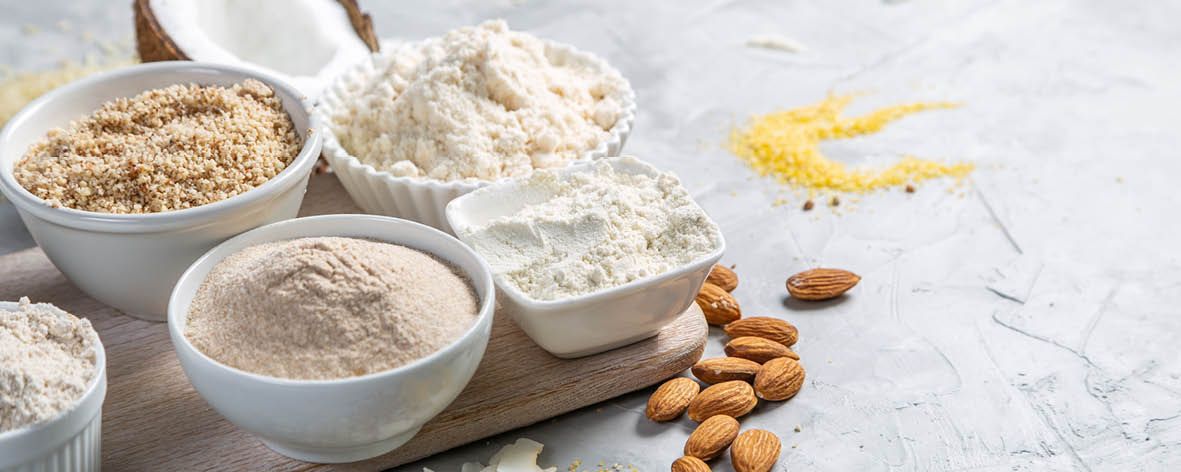All you need to know about … flour

It’s a kitchen staple that is the basis for everything from bread to cakes to pasta and with a huge variety of flours available it can be confusing knowing which type to use for your recipe. We’ve sifted through the options to give you a quick guide to the different types of flour and when to use them.
White vs Wholemeal
Several flours come in white or wholemeal varieties. Wholemeal flour includes every part of the grain and has a higher fibre content than white flour. White flour has the bran and wheat germ removed to produce a finer, more delicate flour. Wholemeal flour is more absorbent than white flour so you may need to add more liquid when baking. White flour will keep for longer than wholemeal flour as wholemeal flour contains natural oils that can spoil more readily. Both white and wholemeal flour should be kept in airtight containers.
Types of flour
Plain flour - Also known as ‘All-Purpose Flour’, plain flour will work well in most recipes. It is best used in biscuits, bread and baked goods.
Self-raising flour – With added raising agents, this flour makes light and fluffy cakes a piece of, um, cake! It is also perfect for scones and pancakes.
OO flour – This flour derives its name from the Italian system for grading how finely the flour is ground. OO is very fine; the texture is similar to cornflour and it is high in gluten and protein. OO is excellent for making pizza dough and pasta.
Baker’s flour - Also known as ‘Bread Flour’, it is the go-to for bakers because its gluten content makes it perfect for making bread and rolls.
Spelt flour – Although this ancient grain is technically a form of wheat, the gluten breaks down more quickly so those with a sensitivity to wheat may find that they are able to digest it more easily. It has a distinctive nutty and naturally sweet taste. Use it for bread, pizza dough and biscuits.
Rye flour – Although it is not a variety of wheat, rye does contain gluten, albeit a low amount. It has a tangy, slightly sour flavour and is tricky to work with so rather than making a 100% rye bread, try it combined with other flours. It is most often used for making sourdough or artisanal breads.
Buckwheat flour – High in protein but with no gluten, buckwheat flour has a nutty, slightly sweet flavour. It absorbs a lot of moisture so if you are using it as a substitute for plain or self-raising flour you may need to add more liquid to the recipe. It is best used for pancakes, noodles, blinis, savoury crackers and biscuits.
Coconut flour – A low carb, absorbent flour made from the white flesh of the coconut. It has a sweet, coconutty flavour. It works well in dense cakes, pancakes and slices.
Nut flour – Literally made from nuts that have been blitzed, the most common type of nut flour is almond meal. As it is made from nuts it can be oily, but it is gluten-free. It is best used for baked goods like biscuits or tarts that don’t need to rise.
Besan flour – This savoury, nutty flavoured flour is made from finely ground chickpeas. It has a pale-yellow colour and is good in savoury dishes, sauces and roti.
Rice flour – With a high starch content and neutral flavour, rice flour works well when combined with a gluten-rich flour. Use it for noodles, fritter, tempura batter, and sponge cakes.
Quinoa flour – Best used in savoury dishes, quinoa flour is earthy and dense and has a high protein content. It is good in gluten-free baking but if using to make bread it is better combined with other starches to avoid a crumbly texture.

